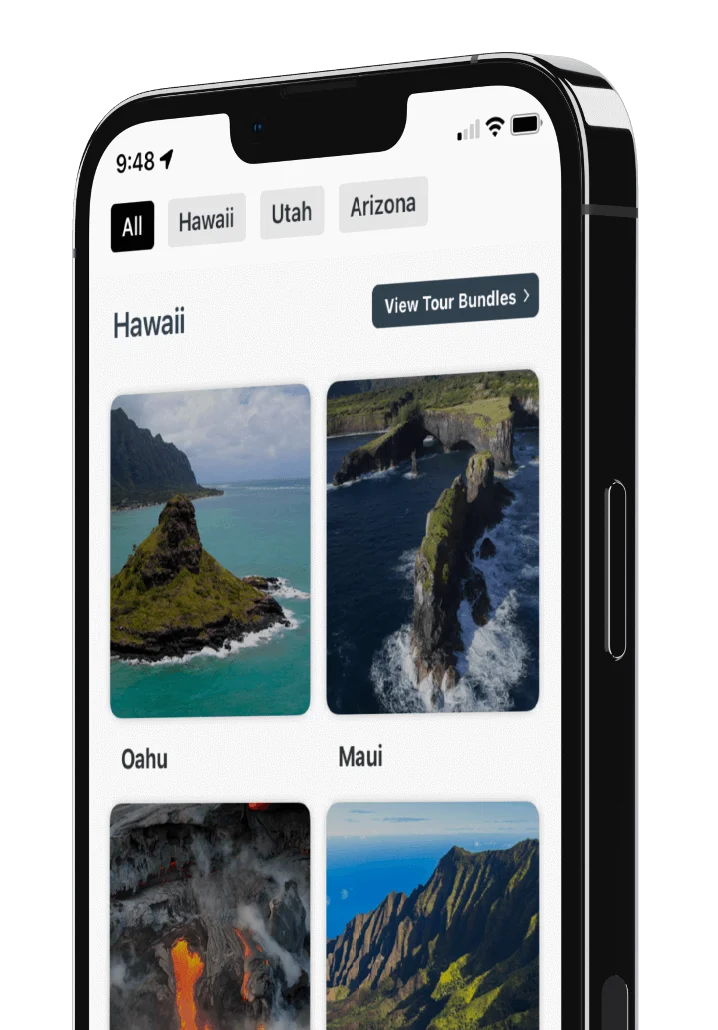
Blue Ridge Parkway Asheville: The Ultimate Tourist's Guide

The Blue Ridge Parkway showcases the beauty and majesty of the Blue Ridge Mountains from Shenandoah in Virginia to the Great Smokies in North Carolina. This one-of-a-kind scenic road was purposefully designed to display the natural wonders of this Southern Appalachian range–like “jewels” in a spectacular 469-mile necklace. Featuring:
- breathtaking scenery
- rich cultural heritage
- traditional music
- folk art
- unique plants
- animal life
- real gemstones and minerals
The Blue Ridge Parkway is indeed a national treasure. Over 15 million people drive the parkway each year. As the most visited national park unit in the country, it’s easy to see why people call this “America’s Favorite Drive.”
Western North Carolina Stretch: Highlights of the 90-Mile Section

In western North Carolina, the 90-mile stretch of road between Asheville and Blowing Rock includes some of the best the Blue Ridge Parkway has to offer. In this section, you’ll find spectacular overlooks, beautiful hikes, mountain-top vistas, and pristine waterfalls and lakes. You can:
- walk through dense forests of evergreens
- Explore a limestone cavern
- cross a mile-high swinging bridge
- visit a historic mine
- simply sit atop a huge boulder and drink in the distant views
This segment of the parkway also features Mount Mitchell, the tallest mountain in the Eastern United States, and the iconic Linn Cove Viaduct, an engineering marvel.
Whether you visit in the spring when the mountain meadows blaze with pink and purple rhododendrons, in the summer when wildflowers blanket the slopes, or in the fall when the hills glow with gold and crimson, you’ll find something to dazzle your senses.
What You Need to Know Before You Go
Park Entrance Fees/Hours
The Blue Ridge Parkway does not require an entrance fee like other national parks. It’s free to drive and is open 24/7 all year round! However, some sections of the roadway or other park services may close temporarily due to bad weather or maintenance. It’s a good idea to double-check the park website for closures, especially in the winter months.
It’s All About the Views
 Grandfather Mountain/ Shutterstock Image
Grandfather Mountain/ Shutterstock Image
You can drive the parkway from Asheville to Blowing Rock in as little as 2.5 hours if you drive straight through. However, the best way to experience the parkway is to take your time, get outside, and enjoy the views. In about 4 hours, you can catch a few highlights–like the visitor centers and overlooks.
But if you want to get out in nature and hike a couple of the short trails, then plan for 6-8 hours. Additional hikes or taking side trips to Mount Mitchell or any of the tourist attractions will extend the tour even further. If you want to experience all the parkway has to offer, plan to spend two to three days in the area.
Driving
The Blue Ridge Parkway follows the contour of the mountains, so be prepared for numerous curves and elevation changes. The max speed limit on the windy, two-lane road is 45 miles per hour. However, there are places where the speed is lower–like around steep curves or near the visitor centers.
Follow posted speed limits and keep your eyes open for cyclists who share the road. With narrow shoulders, numerous curves, steep grades, and deep edge ruts, the parkway requires your full attention. “Enjoy the view–but watch the road!”
There are eight tunnels on this section of the parkway. Turn on your lights when driving through and watch out for cyclists as there are no shoulders in the tunnels. If you plan to drive an RV or motorhome, check the height of your vehicle before heading out. On this stretch of parkway, the lowest tunnel height is 13 feet at Craggy Pinnacle.
Gas/Food
Along the parkway, access to gas, food, and water is limited, so plan ahead. You can access gas and food in Spruce Pine (halfway) and in Blowing Rock. You can also grab a bite to eat at:
However, most of these restaurants are only open seasonally.
If you decide to pack a lunch, you can choose from several beautiful picnic spots along the way at designated picnic areas or on a sunny rock outcrop at one of the lookouts. Crabtree Picnic Area is a popular spot for lunch, and most tables come with a view!
Parking
There are numerous overlooks all along the parkway. They have limited parking and may be full during the busy summer and fall seasons. You’re allowed to park along the shoulder if there is space–as long as all four wheels are off the pavement. However, in the designated watershed area, parking on the shoulder is not allowed in order to protect the fragile environment.
Cell Phone/WiFi
Cell reception and public WiFi are limited on the parkway. It’s a good idea to bring along a downloaded map or a good old-fashioned paper one. If you’re taking the Shaka Guide tour it works completely offline - you’ll still get a map, directions, stories, and music even without data or wifi.
Pets
Pets must be on a leash (max 6’) and under your control at all times. Only service animals are allowed in parkway facilities.
Blue Ridge Parkway Visitor Centers: Asheville to Blowing Rock
The Blue Ridge Parkway offers a number of fantastic visitor centers. Each has a different focus, and all are worth visiting. Some are open year-round while others are only open seasonally.
Blue Ridge Parkway Visitor Center
 Image by Robin Montgomery
Image by Robin Montgomery
The Blue Ridge Parkway Visitor Center is the main park visitor center. It’s located east of Asheville just past the Hwy 74 junction. Open at 9 a.m. daily, the center is a great place to grab a map, check with rangers about hikes, pick up area information, and explore exhibits on the parkway’s design and construction along with some local history. You can also visit the restrooms before hitting the road.
Folk Art Center
 Image by Robin Montgomery
Image by Robin Montgomery
Just a few minutes’ drive away is the Folk Art Center. Open from 10 a.m. to 5 p.m. year-round, this visitor center showcases Appalachian arts and crafts in their Folk Art Gallery, It also houses the headquarters of the Southern Highland Craft Guild. Check out their handmade Appalachian crafts in the gift shop. You can also hike a section of the Mountain-to-Sea trail from behind the center.
Craggy Gardens Visitor Center
 Image by Robin Montgomery
Image by Robin Montgomery
The Craggy Gardens Visitor Center is open seasonally from mid-April to mid-November and highlights the unique ecology of the rhododendron heath bald. The center's daily hours are 10 a.m. to 5 p.m. and 10 a.m. to 4 p.m. after October 31.
Craggy Gardens is one of the best places on the parkway to view the rhododendrons in the spring. You can access the popular Craggy Gardens Trail and Craggy Pinnacle Trail nearby. This section of the parkway is often blanketed in fog and can sometimes be closed due to inclement weather. Remember to check road conditions first.
Museum of North Carolina Minerals

The Museum of North Carolina Minerals, located in the heart of the Spruce Pine Mining District, is home to interactive exhibits about North Carolina minerals and their mining history. It's open year-round from 10 a.m. to 5 p.m. (It’s closed for lunch between 1 p.m. and 2 p.m.)
The museum sits in Gillespie Gap where the Overmountain Men crossed the mountains during the Revolutionary War on their way to the Battle of King's Mountain. In mid-September, the museum hosts a re-enactment of the Overmountain Men. You can access the Overmountain Men Victory Trail behind the building.
Linville Falls Visitor Center
 Image by Robin Montgomery
Image by Robin Montgomery
The Linville Falls Visitor Center features a small gift shop, restrooms, maps, and hiking information for the Linville Gorge Wilderness Area. It’s open daily from 10 a.m. to 5 p.m. between April 29 to October 31. Trails for iconic Linville Falls begin behind the visitor center.
Moses H. Cone Memorial Park
 Image by Robin Montgomery
Image by Robin Montgomery
The last visitor center on this section of the parkway is the Moses H. Cone Memorial Park in Blowing Rock. The highlight of the park is Flat Top Manor, the magnificent summer home of textile giant Moses H. Cone and his wife Bertha.
Open to the public from April 15 to November 27, the mansion features a folk craft store as well as a National Parks Visitor Center with a small gift shop and park information. During the busy summer months, the manor house is open daily from 10 a.m. to 5 p.m. In the shoulder season, it’s only open Wednesdays through Sundays from 10 a.m. to 4 p.m.
The beautiful and extensive grounds of the Cone Estate include an orchard, fishing lakes, and 25 miles of beautiful carriage trails. These well-maintained walking trails are open to the public year-round.
RELATED: From Vision to Reality: The Story of the Blue Ridge Parkway
Getting to the Parkway
This 90-mile section of the parkway is located in western North Carolina between Asheville and Blowing Rock. Asheville Regional Airport (AVL) is the closest airport to this section of the parkway–just 17 miles south of Asheville and only 20 minutes from the main visitor center.
However, as a smaller airport, its services are limited. If you need more flight options and don’t mind a bit of a drive, Greenville-Spartanburg International Airport (GSP) in Greenville, SC, is only an hour and a half south of Asheville, and Charlotte Douglas International Airport (CLT) is about two hours away from both Asheville and Blowing Rock.
There are actually several places you can access the Parkway between Asheville and Blowing Rock. If you’re staying in Asheville, you can hop on the parkway south of the city where it intersects with Hwy 25, or east where it crosses Hwy 74 or Hwy 70/Tunnel Road.
In Blowing Rock, the parkway can be easily accessed from Hwy 221 as well as Hwy 321. Check a map for other access points if you’re coming from somewhere else. Just remember that gas and food services are few and far between. Make a point of filling up in Asheville or Blowing Rock before hitting the road.
Weather and Best Time to Visit
While the Blue Ridge Parkway is spectacular any time of year, when you choose to visit depends on what you want to see.
Spring
 Image by Robin Montgomery
Image by Robin Montgomery
Are you a fan of spring color? Then plan a visit to the parkway in spring. Crabtree Falls Picnic Area and Trail put on a brilliant display of wildflowers in April and May. In early to mid-June, the mountains are ablaze with Catawba Rhododendrons.
Craggy Gardens is one of the best spots on the parkway to catch those vivid pinks and purples. In spring, temperatures range from 33 to 67 degrees Fahrenheit, depending on the elevation. It’s warmer in the lower elevations and cooler in the higher elevations.
Spring weather can be very unpredictable on the parkway, especially early in the season, so be prepared for extremes. The weather can change from sunny to cloudy, from warm to cool, or from clear to foggy in just a matter of hours. You might even catch a spring snow shower. Dressing in layers is a great way to enjoy this season on the parkway.
Summer
More of a warm-weather kind of person? Then summer may be your best bet. While still hot and humid, the temperatures in the mountains are much more pleasant than in the valleys below.
They range from 53 to 85 degrees Fahrenheit. However, summer also brings afternoon showers and thunderstorms–and definitely more bugs, so plan accordingly. Sunscreen, a light rain jacket or poncho, and insect repellent are a must.
Fall
 Shutterstock Image
Shutterstock Image
Want to catch the trees in all their glory? Then plan your visit for mid-late October. Fall in the Blue Ridge Mountains is simply breathtaking. Clear skies, cooler weather, and the spectacular fall color display make this a popular season to visit the parkway.
Rough Ridge Lookout, Grandfather Mountain, and the Linn Cove Viaduct are some of the best places to view those vibrant fall colors. Temperatures range from 39 to 68 degrees Fahrenheit. It’s also much drier this time of year with only occasional showers. By November, snow is possible in the higher elevations. Dressing in layers is key to enjoying this time of year.
Winter
If you prefer solitude and don’t mind bundling up, then winter can also be a wonderful time to visit. The mountains are often blanketed in mist or snow making a hike through the woods a magical experience. Bring a camera to catch frozen waterfalls, mist shrouding the trees, or snow blanketing the trail.
With temperatures often dropping below freezing, sections of the parkway may close in the winter due to snow and ice. Many services like campgrounds, picnic areas, and some visitor centers are closed during winter, but trails remain open year-round as long as roads are open. Check road conditions before heading out.
No matter what season you visit the parkway, it’s always a good idea to keep an eye on the weather. If you plan to travel during the cooler months, dress in layers. Bring a warm coat when visiting Mount Mitchell or Grandfather Mountain where temperatures can be 10-20 degrees cooler or when visiting Linville Caverns which remains at 52 degrees year round. In the summer, remember to use sunscreen and drink plenty of water.
How to Avoid the Crowds
As one of the most visited national parks in the country, it’s likely you’ll be sharing the road and trails with other travelers. The busiest times on the parkway are from April through October. While it’s much less crowded from November to March, most visitor centers are closed and sections of the road may be closed also due to icy conditions.
Even if you come during the busy season, planning your visit for a weekday rather than the weekend is a great way to avoid the crowds. Another option is to hit the road early or stay late. Since the parkway is open 24 hours a day, you can even catch a sunrise or sunset at one of the overlooks if you time it right. It’s a great way to start–or end your day!
Things to Do: Blue Ridge Parkway Asheville
1. Take a Shaka Guide Tour
To get the most out of your experience on the parkway, download Shaka Guide’s Blue Ridge Parkway Tour – From Asheville to Blowing Rock. Enjoy a wonderful adventure on the parkway with all the planning done for you. This engaging, self-guided audio tour includes detailed directions, practical travel advice, hiking recommendations, and entertaining stories about the history, geology, and people of the Blue Ridge Mountains.
2. Admire the Views
The scenic overlooks on the Blue Ridge Parkway were designed to showcase the natural beauty of the mountains. They are the wilderness gems that make the parkway so special. Make sure to stop at as many as you can.
 Image by Robin Montgomery
Image by Robin Montgomery
Most views are right off the parkway–like the breathtaking one from Green Knob Overlook which was used in the opening scene of the 1992 movie, The Last of the Mohicans. A few require a short walk for the view. Rough Ridge Lookout and Beacon Heights Overlook Trail offer stunning views that are off the beaten path–but definitely worth the hike.
3. Stop at a Visitor Center
 Craggy Gardens Visitor Center/ Image by Robin Montgomery
Craggy Gardens Visitor Center/ Image by Robin Montgomery
Stop at any or all of the six National Park Visitor Centers on this route. Talk to a ranger or pick up a map. These are great places to learn about the local history, ecology, and geology of the region. Pick up a souvenir at the gift shops or get a stamp in your National Parks Passport book. You can access many of the recommended hikes from the visitor centers as well.
4. Take a Hike!
 Shutterstock Image
Shutterstock Image
The Blue Ridge Parkway is an outdoor lover’s paradise. Whether you’re a hard-core hiker or fair-weather walker, there are trails of varying length and difficulty for just about everyone. Some of the more popular trails include the Craggy Gardens Trail, Linville Falls Trail, Rough Ridge Lookout Trail, and the 13-mile Tanawha Trail. Details about these trails and many more can be found in our Hiking Guide.
5. Stand on the Highest Point East of the Mississippi
 Image by Robin Montgomery
Image by Robin Montgomery
You definitely won’t want to miss a visit to Mount Mitchell State Park, featuring the highest peak in the eastern United States–Mount Mitchell! The park is free to enter and easy to access, located right off the Blue Ridge Parkway. It’s only a 10-minute drive to the summit parking lot where there is a short but steep paved trail to the observation deck on top.
From 6,684 feet up, the panoramic views are incredible! On a clear day, you can see as far as 85 miles away. To get the fullest experience, visit both the observation deck on the summit for out-of-this-world views as well as the Balsam Nature Trail for a walk through the magical spruce-fir forest.
The park also features additional hiking trails, a museum, a gift shop, restrooms, a seasonal restaurant, concessions, a visitor center, and camping. Due to the high elevation, temperatures at the summit can be 10 to 20 degrees cooler than on the parkway. You’ll want to pack along a coat or jacket.
Mount Mitchell State Park is open daily at 7 a.m. with varying closing times depending on the month. While the trails are open year-round, the roads may be closed seasonally due to ice or snow. Check the park’s website for current road conditions and operating hours.
6. Drive the Linn Cove Viaduct
 Shutterstock Image
Shutterstock Image
Probably the most photographed structure on the parkway, the Linn Cove Viaduct is an engineering marvel. The complicated bridge appears to float gently around Grandfather Mountain on tall concrete piers. Its design and construction preserve the fragile habitat of Grandfather Mountain while showcasing its beauty.
Completed in 1987, the viaduct was the final segment of the Blue Ridge Parkway to be built. While the adjacent Linn Cove Visitor Center is no longer open, you can still access trails from the parking lot. A walk along the Tanawha Trail will take you under the viaduct for a close-up view.
7. Visit Little Switzerland
 Image by Robin Montgomery
Image by Robin Montgomery
One of the closest towns to the parkway, the Alpine-themed village of Little Switzerland offers lodging, shopping, and food. Located halfway between Asheville and Blowing Rock, Little Switzerland is a great place to stay overnight if you want to do this trip in two days. However, the tiny tourist village is only open seasonally and closes during the winter.
8. Dig for Real Gemstones or Pan for Gold
 Image by Robin Montgomery
Image by Robin Montgomery
If you have the time and budget, consider checking out Emerald Village. This fun tourist attraction in Little Switzerland offers family-friendly mining activities where the young and young-at-heart can pan for gold, dig for real gemstones, tour extensive exhibits in their 10-story Discovery Mill, or tour a historic mine.
Warning--prospecting requires some digging in the dirt, so pack an extra outfit for the kids and bring along Ziploc bags for treasures. Open daily between April 1 and October 31. Check their website for seasonal hours and separate activity fees.
9. Get a Slice of Homemade Apple Pie with a Side of Appalachian History
 Image by Robin Montgomery
Image by Robin Montgomery
Not only does the Orchard at Altapass pride itself on growing the best heirloom apples possible, but it also works hard to preserve the regional traditions and culture of the land.
The orchard hosts educational and entertaining activities for all ages including live Old Time music, apple picking, the Clinchfield Model Railway, walking trails, and "Hey" Rides--a storytelling hay ride through the orchard that brings to life the history of the Overmountain Men during the American Revolution and the fascinating life of early settler Charles McKinney.
Wrap up your visit at the General Store with a serving of fresh, hot apple pie alamode. Check out their website for seasonal hours.
10. Tour a Limestone Cavern
 Image by Robin Montgomery
Image by Robin Montgomery
A visit to Linville Caverns reveals the natural wonders hidden deep inside Humpback Mountain. Guided cave tours showcase fascinating limestone features like stalactites, stalagmites, the "Ballroom" and a frozen waterfall. The moderately priced half-hour tours run every 10 minutes and are first-come, first-served.
The temperature remains steady at 52 degrees, so bring a jacket or sweater. The caverns are closed on Tuesdays and Wednesdays and are only open on weekends during the winter. Check their website for seasonal hours and fees, and call ahead to check how busy they are. If it’s busy, purchase tickets for a later tour and consider doing the hike to Linville Falls while you wait.
11. Cross a Mile-High Swinging Bridge
 Image by Robin Montgomery
Image by Robin Montgomery
Grandfather Mountain is a must-see tourist destination only a couple of minutes off the parkway that showcases all the beauty and splendor of Grandfather Mountain. Cross the breathtaking Mile-high Swinging Bridge for one of the most spectacular views around. Explore easy trails through peaceful forests or challenging hikes along rugged peaks.
Visit the interactive exhibits in the Wilson Center for Nature Discovery and see cougars, elk, bald eagles, river otters, and black bears up close. And drive the famous "Forrest Gump Curve" featured in the iconic American movie. Admission is steep, but the experience is priceless. Online reservations are highly recommended. Check their website for fees and seasonal hours.
12. Visit the Charming Town of Blowing Rock
 Image by Robin Montgomery
Image by Robin Montgomery
In the charming tourist town of Blowing Rock, you’ll find quaint shops, cafes, lodging, parks, and North Carolina's oldest tourist attraction and town namesake, The Blowing Rock. It’s "The only place in the world where snow falls upside down."
The main attraction is the large jutting rock formation where a strong current of air blows straight up. Open daily, the attraction charges a moderate entrance fee. Check their website for seasonal hours and fees. The town of Blowing Rock is also a winter sports destination offering options for both downhill and cross-country skiing.
13. Go Camping
 Image by Robin Montgomery
Image by Robin Montgomery
What better way to enjoy the Blue Ridge Mountains than to spend the night under the stars? There are three National Park campgrounds along this section of the parkway at Crabtree Falls, Linville Falls, and Julian Price Memorial Park.
Mount Mitchell State Park also has a campground. Most of these close during the winter, so check their websites for available dates. There are also a number of privately owned campgrounds and RV parks nearby.
14. Go Fishing
Price Lake opens for fishing in April. The 47-acre man-made lake in Julian Price Memorial Park is stocked with trout each month and offers numerous fishing spots. You can also fish at Trout Lake and Bass Lake in the Moses H. Cone Memorial Park. A state license is required.
 Image of Price Lake by Doug Caldwell
Image of Price Lake by Doug Caldwell
15. Go Paddling
 Image by Robin Montgomery
Image by Robin Montgomery
Enjoy spending time on the water? At Price Lake, you can paddle a canoe, stand-up paddle board, single kayak, or double kayak. While swimming is not allowed on any of the lakes along the parkway, you are invited to paddle away to your heart’s content. Boat rentals are available at Price Lake Boat Rentals on weekends in the spring and fall and daily during the summer. Check the website for details on hours and rental costs.
16. Go Skiing
Blowing Rock offers downhill skiing at the nearby Appalachian Ski Mountain as well as cross-country skiing on the carriage trails at Moses H. Cone Memorial Park.
17. Watch the Sunrise or Sunset
About a 15-minute drive from Asheville, Haw Creek Valley Overlook offers beautiful sunset views with the twinkling lights of Asheville in the distance.
For a stunning mountaintop view, Craggy Pinnacle is hard to beat and is perfect for watching either the sunrise or sunset. The 1.5-mile roundtrip hike to the pinnacle is usually accessible from April through mid-November. The high summit of Mount Mitchell is also a fantastic choice for spectacular sunset views, as are Rough Ridge Lookout and Beacon Heights Overlook.
No matter where you catch the sunrise or sunset, remember to bring a flashlight and camera, and dress warmly.
Where to Stay
Asheville offers numerous lodging options from inexpensive hotels to pricey vacation rentals and everything in between. Little Switzerland, about halfway along this section of the parkway, also has some fun options for overnight stays including historic accommodations like the:
as well as a number of cabins and vacation rentals. The charming town of Blowing Rock offers multiple options including hotels, inns, cabins, bed and breakfasts, vacation rentals, and more.
Where to Eat
 Image by Robin Montgomery
Image by Robin Montgomery
Asheville offers a multitude of restaurant choices. Check out Tupelo Honey for delicious made-from-scratch Southern cooking. Hitting the road early? Try the Early Girl Eatery south of Asheville. This farm-to-table cafe opens at 8 a.m. and also offers a takeout option–perfect for a picnic down the road.
Conveniently located halfway between Asheville and Blowing Rock, Little Switzerland is a great place to stop for lunch. Try the Switzerland Cafe, famous for its fresh homemade soups, sandwiches, quiches, and mouth-watering BBQ.
If you’re looking for fine dining with incredible mountain views, it’s hard to beat the Switzerland Inn Chalet Restaurant. Little Switzerland is only open between spring and fall and closes for the winter.
Blowing Rock offers many restaurant options including:
Staying overnight in Blowing Rock? Then try Sunny Rocks Eggs and Things for a delicious Southern-style breakfast.
Outside of these towns, there are limited food options. You can also pack lunch and stop at one of the many picnic spots or scenic overlooks along the parkway.
Leave No Trace
When you visit the Blue Ridge Parkway, we ask that you “Leave No Trace.” You can do this by picking up all of your trash, staying on marked trails, and respecting the park guidelines. The fragile habitat and endangered wildlife that live around the parkway can be easily damaged by careless humans. It’s up to us to preserve this parkway for future generations!
Excited to go? Before you take off, check out our Know Before You Go article and our Blue Ridge Parkway–from Asheville to Blowing Rock Trip Itinerary.
We hope that we’ve given you all the information you need to make the most of your day. Your vacation is extremely important to us so if you have any questions feel free to reach out at aloha@shakaguide.com.
For more detailed information to help you plan, check out our Blue Ridge Parkway Itinerary and Know Before You Go article.
Like this article? Share it on Pinterest!

BLUE RIDGE PARKWAY GUIDES:
Know Before You Go, Blue Ridge Parkway South
Know Before You Go, Blue Ridge Parkway Virginia
Blue Ridge Parkway South Itinerary
Blue Ridge Parkway Virginia Itinerary
BLUE RIDGE PARKWAY RELATED
29 Best Blue Ridge Parkway Hikes
The Story of the Blue Ridge Parkway
A Guide to Blue Ridge Parkway Entrances
























